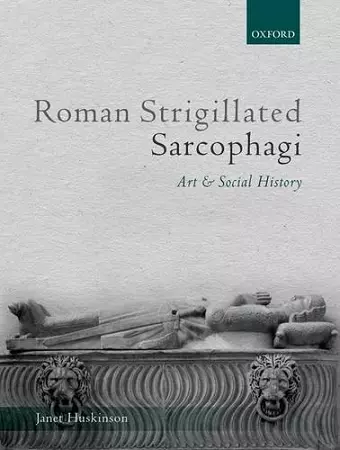Roman Strigillated Sarcophagi
Art and Social History
Format:Hardback
Publisher:Oxford University Press
Published:5th Nov '15
Currently unavailable, and unfortunately no date known when it will be back

This is the first full study of Roman strigillated sarcophagi, which are the largest group of decorated marble sarcophagi to survive in the city of Rome. Characterized by panels of carved fluting - hence the description 'strigillated', after the curved strigil used by Roman bathers to scrape off oil - and limited figure scenes, they were produced from the mid-second to the early fifth century AD, and thus cover a critical period in Rome, from empire to early Christianity. Roman Strigillated Sarcophagi focuses on their rich potential as an historical source for exploring the social and cultural life of the city in the later empire. The first part of the volume examines aspects of their manufacture, use, and viewing, emphasizing distinctive features. The second part looks at the figured representations carved on the sarcophagi, and at their social significance and creativity, concentrating on how their various arrangements allowed viewers to develop their own interpretations. The subjects represented by the figures and the flexibility with which they might be read, provide invaluable insights into how Romans thought about life and death during these changing times. The final part of the volume surveys how later societies responded to Roman strigillated sarcophagi. From as early as the fifth century AD their distinctive decoration and allusions to the Roman past made them especially attractive for reuse in particular contemporary contexts, notably for elite burials and the decoration of prominent buildings. The motif of curved fluting was also adopted and adapted: it decorated neo-classical memorials to Captain Cook, Napoleon's sister-in-law Christine Boyer, and Penelope Boothby, and its use continues into this century, well over one and a half millennia since it first decorated Roman sarcophagi.
In Roman Strigillated Sarcophagi an accomplished scholar provides a grammar for reading (below) the surfaces of Rome's most popular and long-lived sarcophagus type. She also realizes, however, that the inherent ambiguity of images, many evoking a range of meanings now "unknowable", makes translation a fraught enterprise. Still, this comprehensive study clarifies the syntax of a type whose "greatest creative strength" derives from the interplay of its discrete figural fields and the accommodation therein of endless permutations of novel and conventional images. * Dennis Trout, University of Missouri , CJ-Online *
ISBN: 9780199203246
Dimensions: 260mm x 210mm x 26mm
Weight: 1010g
366 pages